Natural Gas: How Are Futures And ETFs Correlated?
Buckle up, time for a ride to the energy ETFs’ world. If you've ever wondered how to trade the energy markets – read on, you are in the right place!
Correlation Analysis
For the sake of this study, we will take the Henry Hub Natural Gas (NG) futures contract as a parameter and draw the correlations on each ETF chart to better visualize their relationship.
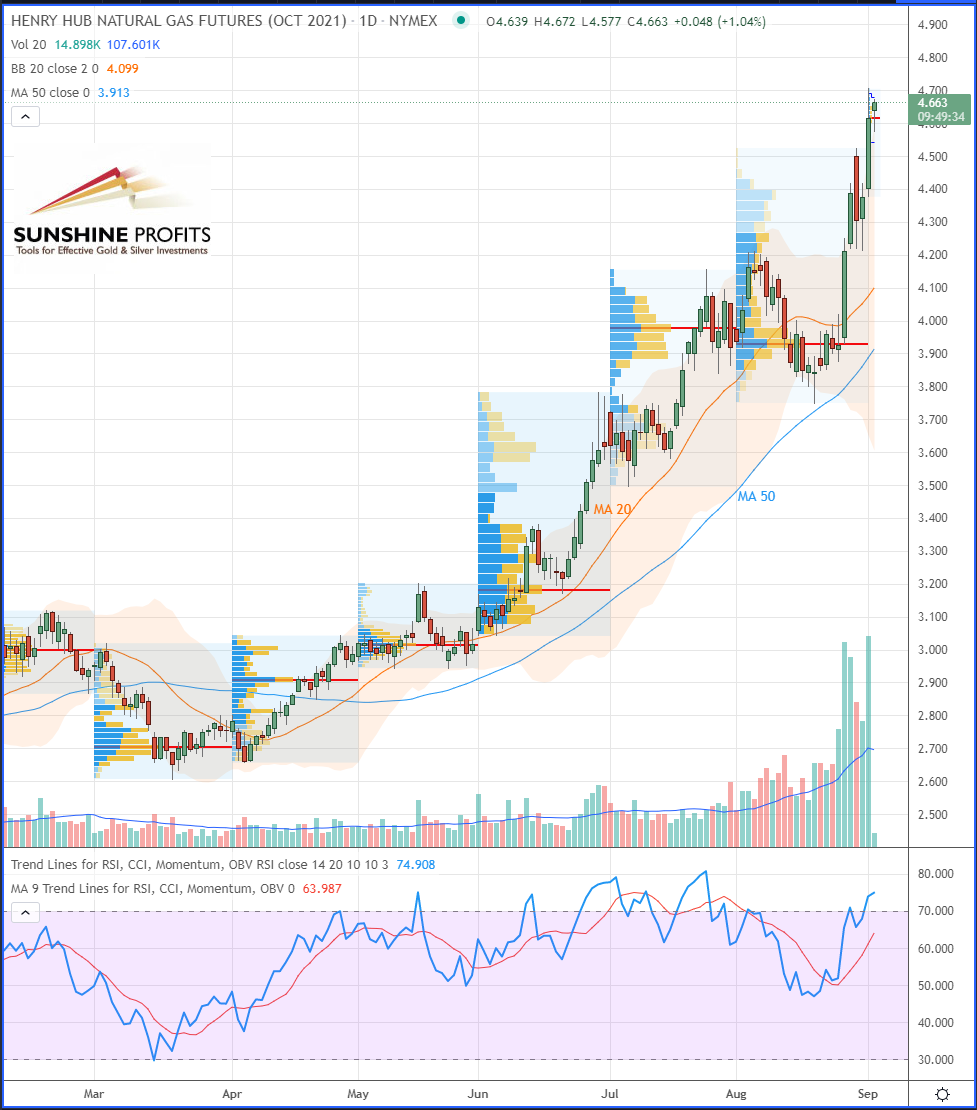
- United States Natural Gas Fund LP (UNG):
“This fund offers exposure to one of America’s most important commodities, natural gas, and potentially has appeal as an inflation hedge. While natural gas may be appealing, UNG often suffers from severe contango making the product more appropriate for short-term traders.” (ETFdb.com)
As you can see on the chart below, the correlation coefficient remains 1 all the time, which is an indication of a perfectly correlated asset to the Henry Hub Natural Gas futures.
To read more about Contango versus Backwardation, I suggest checking these out: -
o “Trading the Curve in Energies” (CME Group);
o “What is Contango and Backwardation” (CME Group).
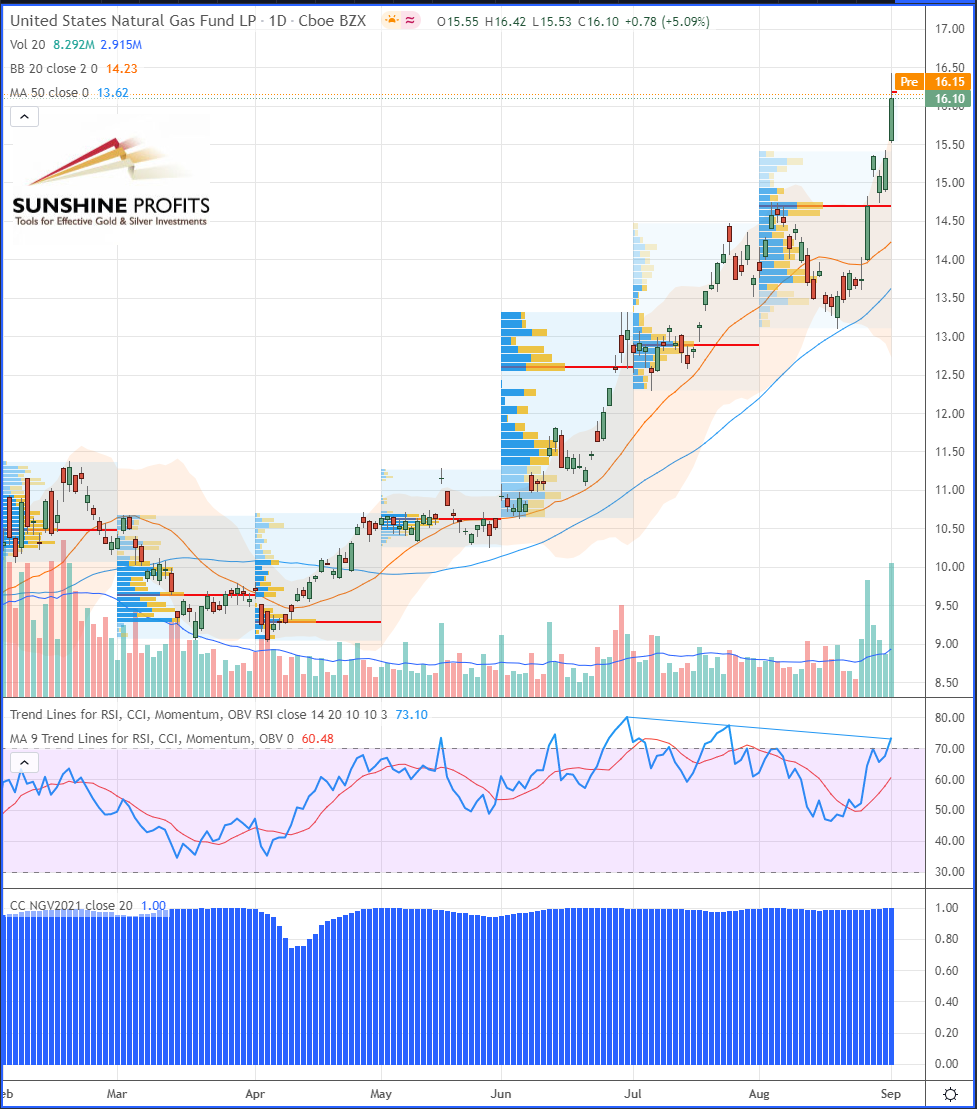
- ProShares UltraShort Bloomberg Natural Gas (KOLD):
“This ETF offers 2x daily inverse leveraged exposure to natural gas, an asset class that is capable of delivering big swings in price over a relatively short period of time. Combining this volatility with explicit leverage results in a fund that has the potential to churn out big gains or losses, meaning that KOLD is really only appropriate for sophisticated, active investors.” (ETFdb.com)
This instrument is particularly useful when you want to short-sell natural gas with leverage of 2:1. So, buying it (w/ a long position) is equivalent to short/selling the underlying asset. As you can see on the chart below, the correlation this time is perfectly inverted (or negative).
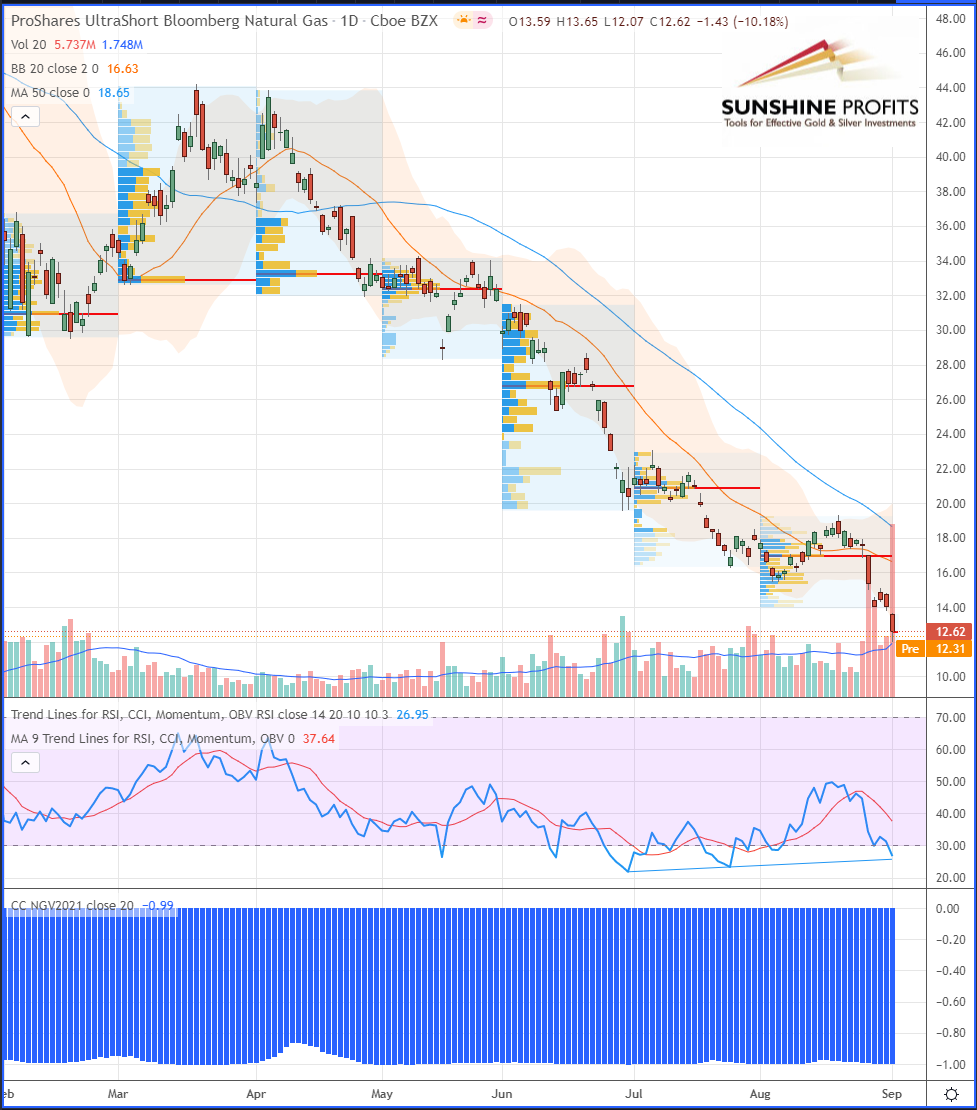
- ProShares Ultra Bloomberg Natural Gas (BOIL):
“This ETF offers 2x daily leveraged exposure to natural gas, an asset class that is capable of delivering big swings in price over a relatively short period of time. Combining this volatility with explicit leverage results in a fund that has the potential to churn out big gains or losses, meaning that BOIL is really only appropriate for sophisticated, active investors.” (ETFdb.com)
This instrument is very similar to the first one — the only difference is, you can buy natural gas with leverage of 2:1.
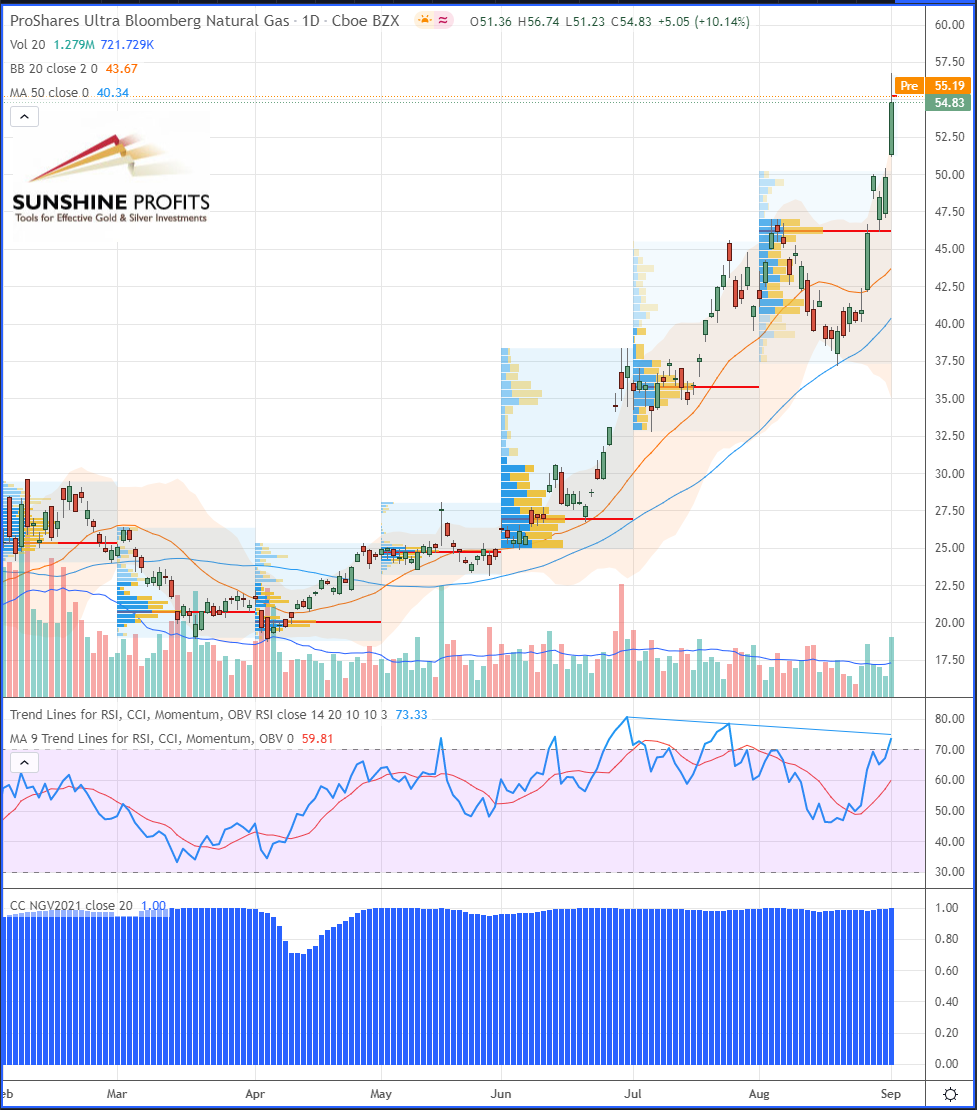
- United States 12 Month Natural Gas Fund LP (UNL):
“This fund offers exposure to one of the America’s most important commodities, natural gas, and potentially has appeal as an inflation hedge. Unlike many commodity products UNL diversifies across multiple maturities, potentially mitigating the adverse impact of contango.” (ETFdb.com)
This fund is similar to the first one (UNG), but more adapted to longer-term traders.
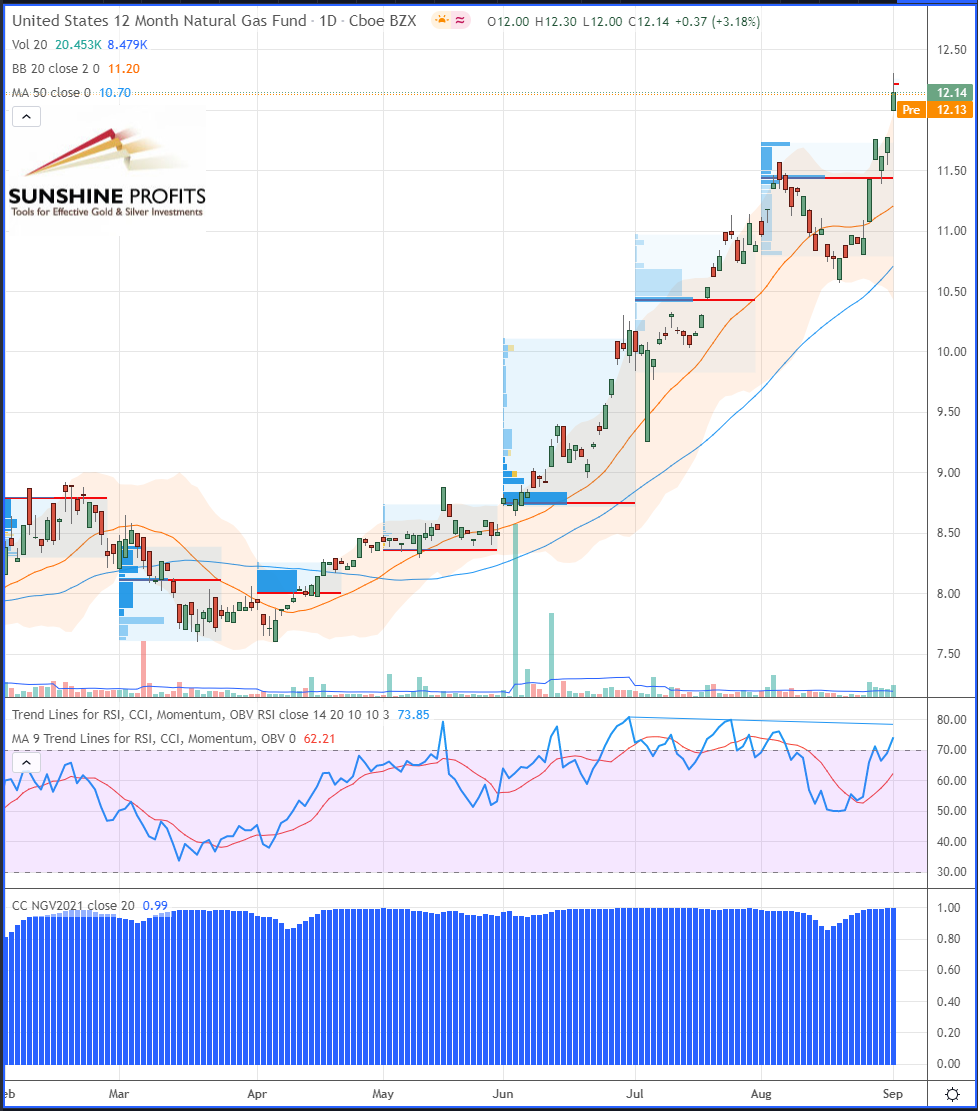
- iPath Series B Bloomberg Natural Gas Subindex Total Return ETN (GAZ):
“This ETN is one of the options available to investors looking to establish exposure to natural gas prices through futures contracts. As such, this product isn’t very useful for those building a long-term, buy-and-hold portfolio; its appeal will be to those looking to express an outlook on movements in natural gas prices over the short term. There are several noteworthy elements of this product. First, GAZ is an ETN, meaning that investors are exposed to the credit risk of the issuer. Second, this ETN won’t generally correspond to changes in spot natural gas prices, as the underlying index is comprised of futures contracts (in many cases, the difference over extended periods of time can be significant). GAZ is really only appropriate for those with a short holding period; investors seeking longer-term exposure to natural gas may want to consider NAGS or UNL. Finally, this ETN has often traded at a significant premium to NAV historically as a result of limitations on the number of shares outstanding; before establishing a position, take careful note of the relationship of price to NAV.” (ETFdb.com)
This instrument is actually an exchange-traded note (ETN) for short-term traders.
To better understand the difference between ETFs & ETNs, I suggest that you read:
o “Exchange-Traded Notes (ETN) Definition” (Investopedia);
o “ETF vs. ETN: What's the Difference?” (Investopedia).
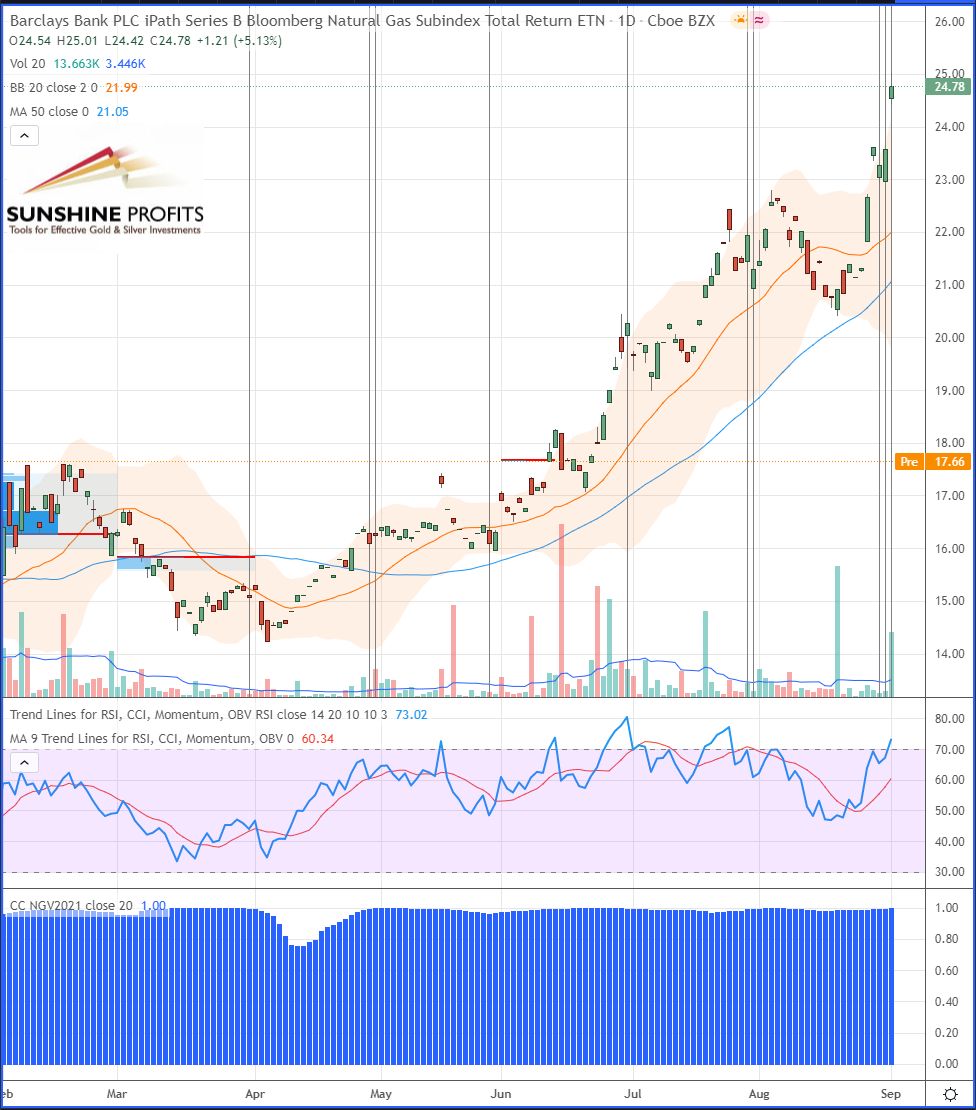
In summary, you can trade natural gas with high leverage (NG futures), little leverage (BOIL/KOLD), no leverage at all (UNG/UNL), or via an ETN (GAZ). You have various options to adopt depending on your personality, risk appetite, and trading strategy. So, let’s get rolling!
Disclaimer: All essays, research and information found in this article represent the analyses and opinions of Sunshine Profits' associates only. As such, it may prove wrong and be ...
more


